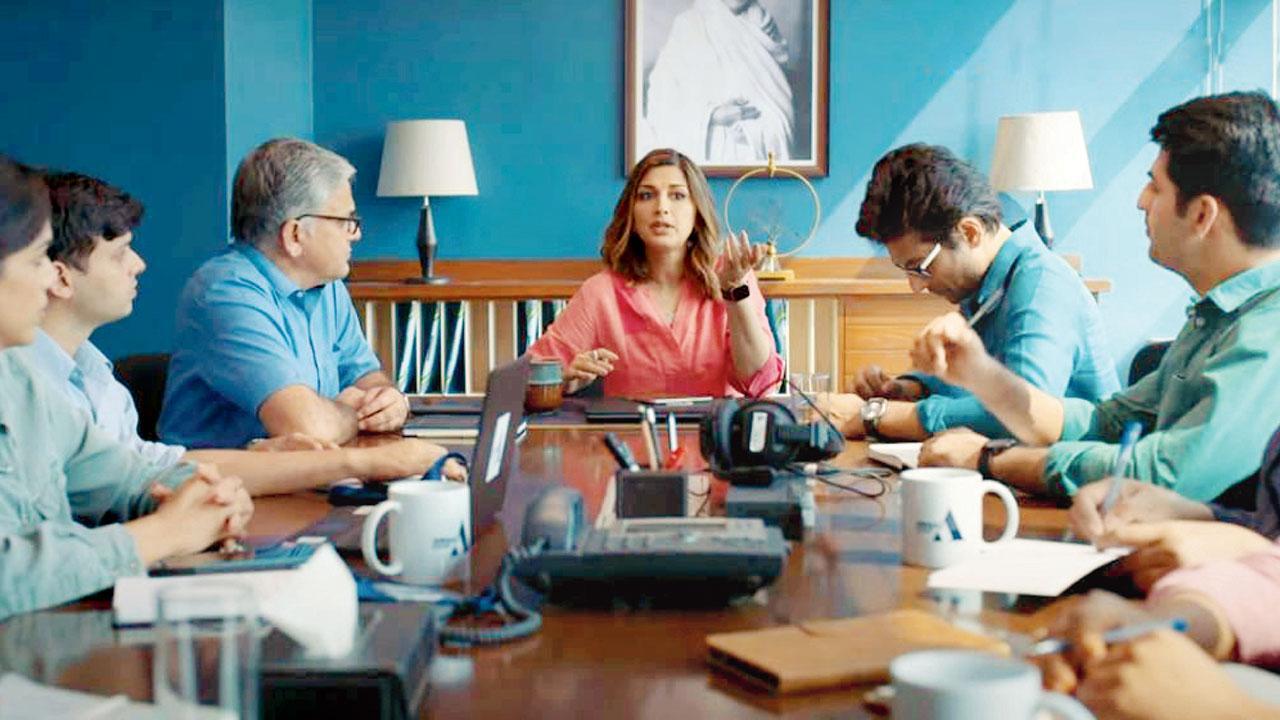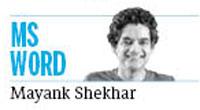Diving into newsroom as a cinematic space, with several reccos, since you’re likely to see more of it in desi film/series

A still from the show The Broken News
 The Broken News, the Indian show on journalists, has a fine source—it’s called The Press. Only that the British series (on Lionsgate Play) is centred on two rival, fictional newspapers—The Post and The Herald. As against two TV news channels in Broken News, that are at war of sorts, over ethics and ratings.
The Broken News, the Indian show on journalists, has a fine source—it’s called The Press. Only that the British series (on Lionsgate Play) is centred on two rival, fictional newspapers—The Post and The Herald. As against two TV news channels in Broken News, that are at war of sorts, over ethics and ratings.
ADVERTISEMENT
This is an opportunity lost. Most Indian cities still actually have about two or three newspapers competing in the mainstream market. How many news channels are there in India? Almost 400! How many news channels are there in the US, for instance, the world’s largest economy? Around 50!
Clearly economics alone can’t justify the number of TV news stations in India. Surely other reasons include a combination of favours, propaganda, and power.
Yet, like the three lead characters in The Broken News, most of the practising, proper journalists I know wish to do journalism, and nothing else. It’s a sort of a high/addiction of its own, and not always for the same reasons.
Ground-up, as with politics itself, there really is no such thing as ‘right wing’ or ‘left wing’. Some things are simply right, or wrong. And as any decent desi scribe will tell you, truth is basically what you can get away with (publishing/airing)!
How have we seen this profession portrayed in movies in general, though? Quite pathetically, if you ask me—right from dadaji’s days, where the gareeb reporter in kurta and jhola walked around with a notepad in hand and camera around the neck, down to a mob of morons with microphones, running behind public figures, asking, “Aapko kaisa lag raha hai, kaisa lag raha aapko?”
Is the portrayal in the competently produced, directed The Broken News any different? Partly, yes. But mainly for its solid cast, truth be told. Imagine the sorted Sonali Bendre as, say, the genteel Sonia Singh from NDTV. Jaideep Ahlawat, her counterpoint, could be a Hindi news channel hound like Deepak Chaurasia (formerly with Aaj Tak), if you may—only much sturdier, way superior.
In many ways, these two characters reflect the tectonic shift that took place in private television news in India, which started out as a slightly sophisticated, civilised English medium platform. It moved totally towards drawing eyeballs alone, soon as proprietors discovered the mass reach of delivering news for the widest markets in Hindi. They began to compete with general entertainment channels, eventually.
The sharp Shriya Pilgaonkar plays the quintessential, brave reporter, in such an environment—almost back-to-back on screen from Guilty Minds (Amazon Prime Video), where she was the ethical lawyer, similarly grappling with idealism, when everything is supposedly a deal. There’s also actor Sanjeeta Bhattacharya, as a young intern, that this show introduced me to, and who I stalked on Insta to figure what a fantastic singer she is!
It’s these performers, foremost, that make the plot/world believable, through portions that anybody can sense, is not. And this is a hard thing to pull off, when Indian TV news has organically entered the world of memes and gags for the way it already exists. How do you even spoof a spoof? Well, you don’t.
Surely my personal biases are apparent. Most scribes (some of them film critics) naturally love the newsroom as a screen genre. It’s the one workplace they know. A reason guys like me invested hours, sitting through two new Netflix shows—the bizarre, As The Crow Flies, from Turkey, and The Journalist in Japanese. Just to see those journalism workplaces. They’re different worlds!
Indians could barely point out a fine film on the subject since New Delhi Times (1986). While making Rann, that turned out rather run-of-the-mill—and which would’ve been one of the first feature films about desi TV news industry—director Ram Gopal Varma had asked me to list him my favourite films on the profession.
And that I mentioned in its review as well: All The President’s Men; Shattered Glass; Frost/Nixon; The Year of Living Dangerously; Good Night, and Good Luck. This was 2010. You could instantly add the masterpiece Spotlight (2015) to the list since. Kill the Messenger (2014) must rate well too. The Post (2017) counts, of course. Given writer Aaron Sorkin’s eye for drama and detail, I felt his series The Newsroom (2012) fell short.
In India, Scam 1992 proved to be a phenomenal peek at journalism as a profession, with two intrepid reporters uncovering the Bombay Stock Exchange fraud. It was still stockbroker Harshad Mehta’s biographical series, set three decades ago. Scam 1992 singularly turned around OTT platform SonyLiv’s fortunes.
Likewise, The Broken News, we’re told, is the most watched show thus far in 2022, on Zee5, at 100+ million viewing minutes.
You’re likely to see more newsrooms in a cinematic space, I suppose. How is this media ecosystem different from everything that’s appeared in the past? As a rogue investor tells the top news anchor-reporter in The Broken News: “More people watch dog-cat videos than they watch you—don’t overestimate your power.”
There is actually way more investigation, story-telling, and journalism going on in The Broken News than the Indian news channels it’s supposedly about. And of course I don’t mean this for the public broadcaster BBC that produced its original source material, Press.
Mayank Shekhar attempts to make sense of mass culture. He tweets @mayankw14
Send your feedback to mailbag@mid-day.com
The views expressed in this column are the individual’s and don’t represent those of the paper.
 Subscribe today by clicking the link and stay updated with the latest news!" Click here!
Subscribe today by clicking the link and stay updated with the latest news!" Click here!







